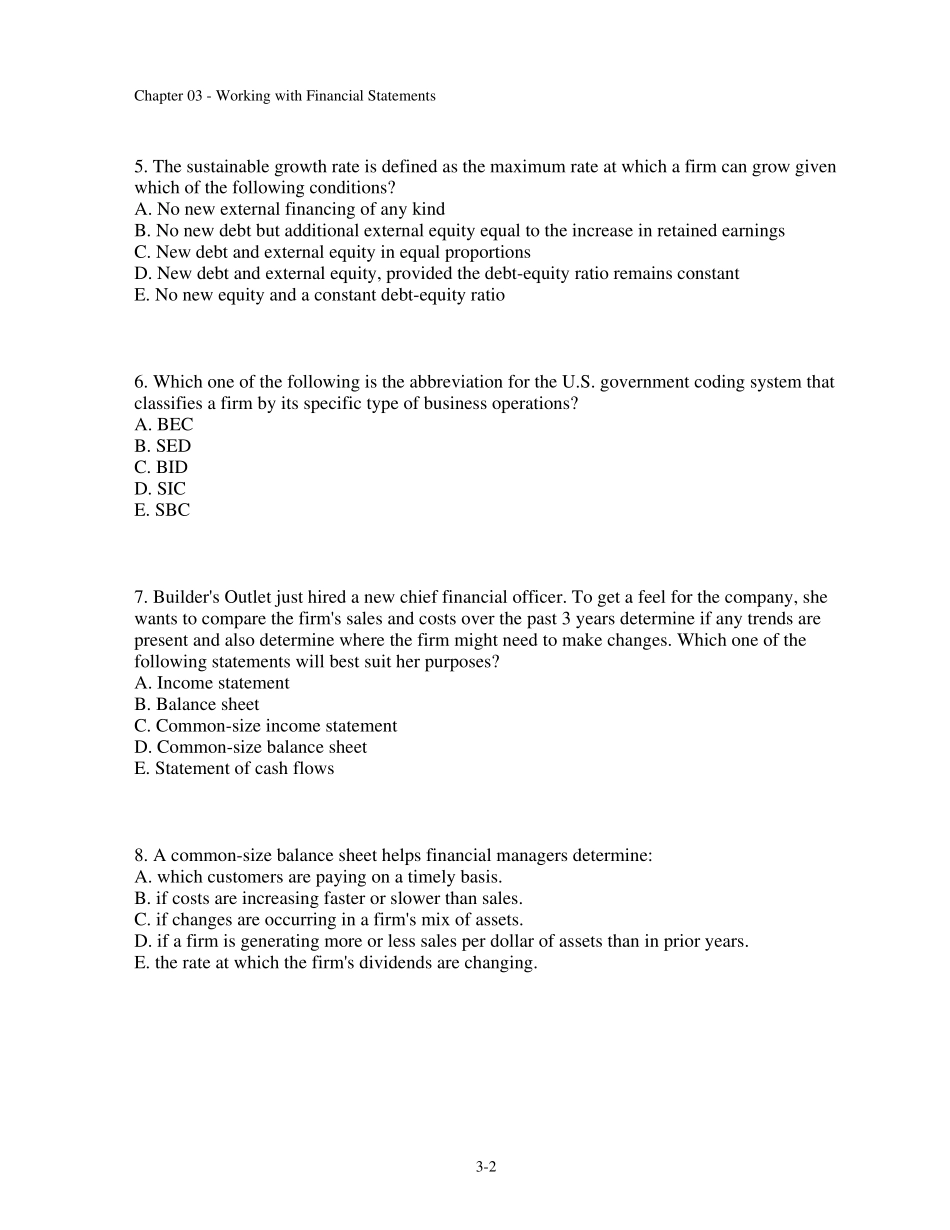Chapter 03 - Working with Financial Statements 3-1 Chapter 03 Working w ith Financial Statements Multiple Choice Questions 1. Common-size financial statements present all balance sheet account values as a percentage of: A. the forecasted budget. B. sales. C. total equity. D. total assets. E. last year's account value. 2. The ratios that are based on financial statement values and used for comparison purposes are called: A. financial ratios. B. industrial statistics. C. equity standards. D. accounting returns. E. analytical standards. 3. The Du Pont identity can be totally defined by which one of the following? A. Return on equity, total asset turnover, and equity multiplier B. Equity multiplier and return on assets C. Profit margin and return on equity D. Total asset turnover, profit margin, and debt-equity ratio E. Equity multiplier, return on assets, and profit margin 4. Which one of the following is the maximum growth rate that a firm can achieve without any additional external financing? A. Du Pont rate B. External growth rate C. Sustainable growth rate D. Internal growth rate E. Cash flow rate Chapter 03 - Working with Financial Statements 3-2 5. The sustainable growth rate is defined as the maximum rate at which a firm can grow given which of the following conditions? A. No new external financing of any kind B. No new debt but additional external equity equal to the increase in retained earnings C. New debt and external equity in equal proportions D. New debt and external equity, provided the debt-equity ratio remains constant E. No new equity and a constant debt-equity ratio 6. Which one of the following is the abbreviation for the U.S. government coding system that classifies a f...


